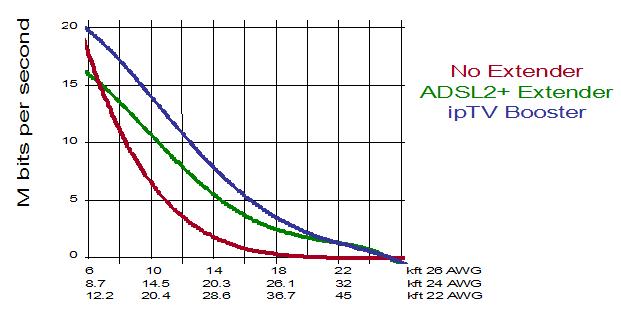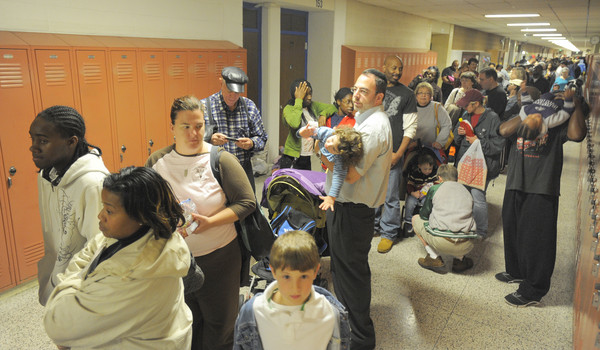Entries by Scott McPherson (423)
WTF? Wall Street firms get swine flu vaccine before you do
Today's news coming out of Wall Street was so preposterous I had to read it three times before it really sunk in. Here, I will let you read it yourself. From the AP:
NEW YORK — Some of New York City's largest employers — including Wall Street firms like Goldman Sachs and big universities — have started receiving doses of the much-in-demand swine flu vaccine for their at-risk employees.
The government-funded vaccine is being distributed to states, where health departments decide where to send the limited doses. In New York, health officials are allowing businesses with onsite medical staff to apply for the vaccine.
Doctors for large companies can ask for the vaccine along with other doctors but must agree to vaccinate only high-risk employees like pregnant women and those with chronic illnesses, said Jessica Scaperotti, a spokeswoman for New York City's Department of Health and Mental Hygiene.
Last month, the city began offering vaccine to schoolchildren, as well as pediatricians and obstetricians who asked for it. Scaperotti said only half of the pediatricians in New York City have requested vaccine
"As the vaccine became more available we expanded it to adult providers," Scaperotti said. She called the large employers "a great avenue for vaccinating people at risk."
But a critic said Wall Street firms shouldn't have access to the vaccine before less wealthy Americans.
"Wall Street banks have already taken so much from us. They've taken trillions of our tax dollars. They've taken away people's homes who are struggling to pay the bills," union official John VanDeventer wrote on the Service Employees International Union Web site. "But they should not be allowed to take away our health and well-being."
The union has about 2 million members, including health care workers.
The swine flu vaccine has been in short supply nationwide because of manufacturing delays, resulting in long lines at clinics and patients being turned away at doctor's offices. The vaccine started trickling out in early October, and there are now nearly 32 million doses available.
The government, which ordered 250 million doses, has recommended that the limited supply go first to high-risk groups: children and young people through age 24, people caring for infants under 6 months, pregnant women and health care workers.
Swine flu — which scientists call the 2009 H1N1 strain — is widespread throughout the country now, much earlier than seasonal flu usually hits.
Nationwide, about 90,000 sites are expected to receive vaccine — mainly hospitals, clinics, doctors' offices, county health departments and pharmacies.
Other big New York City employers that have received doses of the vaccine include Columbia University, Time Inc., the Federal Reserve Bank and several hospitals. The distribution was first reported by Business Week.
Goldman Sachs has received 200 doses and Citigroup has received 1,200, health officials said. So far, 800,000 doses have been delivered to 1,400 health-care providers in New York City, including public schools, pediatricians and hospitals.
Citigroup, "like many other large New York City employers, has partnered with the Department of Health to act as a distribution site for the H1N1 vaccine through the company's health clinics," the company said in a statement Thursday. "The vaccine is being provided only to employees in high-risk categories as defined by the CDC."
Goldman Sachs spokesman Ed Canaday said Thursday that the city's health department "decides in its sole discretion who receives the H1N1 vaccine — both the amount and timing."
"Goldman Sachs, like other responsible employers, has requested vaccine and will supply it only to employees who qualify," Canaday said.
While vaccinating children is a top priority for health officials, Scaperotti said only half of the pediatricians in New York City have asked for it.
Some pediatricians' offices that have received the vaccine, though, said the supply is not meeting the demand.
Manager Linda O'Hanlon at Uptown Pediatrics in Manhattan, said the office has received 500 doses so far — not enough for a practice with almost 7,000 patients.
"We have about 800 appointments" set up for patients who want to get vaccinated, she said.
Associated Press writers Stephen Barnard and Sara Lepro in New York City and Valerie Bauman in Albany, N.Y., contributed to this report.
Copyright © 2009 The Associated Press. All rights reserved.
Gee, I wonder just how many toddlers and children ages 2 to 24 that Goldman Sachs will find in their corporate HQ? I am not one to ordinarily agree with unions, but I think the head of the union quoted in the story hit the nail upon the head.
There have been myriad stories, including one in the New York Times, about New Yorkers waiting hour upon hour to get their children vaccinated. Just Google 'vaccine delay shortage" and you'll get national and local stories by the hundreds.
So children get passed by while Wall Street fatcats get vaccine? Just exactly what target group do they belong to, overweight, bloated, overpaid executives?
This adds to a vaccine credibility problem entirely of the Obama Administration's creation. They have succeeded in creating a caste system for vaccine. And I do not care how many hundred doses Citigroup or other banking firms got and how small that might be compared to the general public. Perception is reality.
If Wall Street bankers want vaccine, they can bloody well stand in line for it with the rest of humanity.
Rethinking seasonal flu death counts
I have had a blog idea for a few weeks, specifically regarding the nagging feeling in the back of my mind regarding seasonal deaths attributed to influenza. Just how reliable are those numbers?
It is like the statement that every day the Florida Legislature is in session, it costs the taxpayers of the Sunshine State $45,000 per day to keep the 160 members in Tallahassee. As a former Member of the Florida House, the Peoples' Chamber, I recalled that in 1982, when I served, the same figure was recited. The $45,000 figure was repeated over and over and over again so often that it took on this bulletproof reputation.
Except that it is not bulletproof. Costs have (at least) doubled since those days, and I can find no one who has actually taken the time to Question Authority and recalculate those numbers.
Therefore, I am inclined to question the Conventional Wisdom whenever I hear a figure thrown out by everyone as if it were gospel. It is with a great sense of personal relief that someone had the same idea regarding deaths from seasonal flu; but, unlike me, that person actually acted upon that idea and wrote a mighty fine blog about it as well.
The source is the blogsite Pandemic Information News. The blog in question, which was reprinted from the Website HealthSentinel.com, questions the validity of the CDC's claim that "36,000 people die every year from influenza." This mantra is repeated over and over again until it takes on this granitelike stature of absolute correctness.
As the PIN/HealthSentinel blog points out, the 36,000 figure is a recent change from the previous estimates that only 20,000 or so actually die every year from seasonal flu. Without trying to explain it, I defer to the actual blog itself. It is so well written and so well-sourced it makes me jealous!
H1N1v swine flu jumps species barrier again, infects Iowa housecat
A Reuters story from today underscores just how resilient and unpredictable swine flu really is. A housecat in Iowa was feeling kinda poopy, as were two human members of the household, owned (as everyone knows) by the housecat.
A vet swabbed the housecat and sent the sample off to be tested. Sure enough, the sample came back positive for H1N1v. This marks the first time a cat has been diagnosed with H1N1.
 But felines catching pandemic or potentially pandemic strains of flu is not new. Recall the Bangkok Zoo tigers -- almost 60 in total -- who had to be euthanized because they ate chickens tainted with H5N1 bird flu. Also, in Indonesia, it is estimated that 20% of all cats contain antibodies to H5N1, because they have feasted or nibbled on poultry and wild birds infected with bird flu. H5N1 is still endemic to Indonesia, and a couple of years ago, the Indonesian Army was called upon to actually swab housecats to check for H5N1 antibodies (photo at left).
But felines catching pandemic or potentially pandemic strains of flu is not new. Recall the Bangkok Zoo tigers -- almost 60 in total -- who had to be euthanized because they ate chickens tainted with H5N1 bird flu. Also, in Indonesia, it is estimated that 20% of all cats contain antibodies to H5N1, because they have feasted or nibbled on poultry and wild birds infected with bird flu. H5N1 is still endemic to Indonesia, and a couple of years ago, the Indonesian Army was called upon to actually swab housecats to check for H5N1 antibodies (photo at left).
Bird flu just flared up again in Vietnam, in an area (Diem Bien province) where it had not been seen in several months. Some 3,000 birds were culled to try and prevent its spread, even though bird flu needs to fire its press agent and hire a new one.
Should we be surprised by this latest development? I am not sure. Perhaps this has more to do with bird flu's affinity for the hunter (cats) and, as my recent blog said, sometimes swine flu runs home to Momma, Momma being the 1/3 avian origin of this unique hybrid pandemic virus. So I am not surprised that H1N1v would jump the species barrier again. Nothing about this virus surprises me anymore.
Dogs are another matter. H3N8 equine influenza crossed the species barrier to dogs in Florida sometime in the past 10 years, but there are no signs that dogs have caught swine flu. There are signs, however, that dogs have caught H5N1 bird flu. In my blog, "Beware of Dog" gains new meaning, I talk about the Dutch experiment regarding H5N1. Dogs can, indeed, catch avian flu. So it would not be surprising, then, if Fido or Buster caught swine flu.
If you read the aforementioned blog, from 2007, it indicates H5N1 droplet nuclei were present and active in dogs' nasal secretions. There are some instances of H3N8 canine influenza in this country right now. Is dual infection likely or unlikely? A lot of people will be boarding their dogs and cats as the holidays approach. I would not be surprised if we see some canine H1N1v infections confirmed, nor would I be surprised if we see a dual infection or two.
This pets-with-swine flu development does potentially complicate things. It means that surveillance needs to take on additional forms, particularly overseas in Asia where dual H5/H1v infections could occur. It means additional "mixing vessels" where avian flu and swine flu could reassort and emerge, infecting pigs, birds and, potentially, people. Surveillance has failed us once this decade, as public and animal health experts were so focused on swabbing birds' asses in the search for H5 that they missed the H1 swine flu pandemic that was brewing right under their noses. What makes matters worse is the grossly underreported fact that swine flu happens in this nation all the time.
So let's alert the vets of America to this new wrinkle, and let's do a little surveillance to see if cats and dogs are bringing their masters more than just dead birds and old shoes.
Why telecommuting will probably fail in a pandemic, Vol. 6: the GAO weighs in
 Dear reader,
Dear reader,
When I say you can get bleeding-edge commentary at this blogsite, I ain't whistling Dixie! As you know if you have been following this Blogsite for any length of time, I have an ongoing series about telecommuting and pandemics. I lecture on the topic frequently, and my last lecture on the topic was at the recent CIDRAP Summit in Minneapolis. The consensus global experts on this issue are Ken McGee of Gartner and myself. I have spent more than three years working on this issue, and my pessimistic conclusions can best be summed up in my latest Powerpoint presentation, Will Telework Work? Keeping Information Technology Up If People Go Down. A slide from that presentation is above.
That presentation, which is also available via subscription at the CIDRAP Business Source Website (along with all the other presentations from that event), serves as both a blueprint for erecting a work-from-home program as well as a cautionary tale about putting too much reliance in telework as a truly viable means of getting work done while keeping oneself (or hisownself, as Joe R. Lansdale would say) out of the office.
Now, the federal Government Accountability Office(HA! What an oxymoron!) has produced a document which pretty much parrots everything I have been saying for the past three years. First, please go back and search this Blogsite for the keyword "telecommuting" and read my prior blogs on the topic. I'll wait.
Back so soon?! Most excellent. Now let us look at the GAO report and analyze it. Sure enough, it mentions everything we have been talking about. Namely, Junior playing XBoxLive while Mom and Dad are trying to access the corporate mainframe. All this, from home cable and DSL routers that are not nearly as fault-tolerant as the T-1 and T-3 connections that are the norm for corporate offices.
You see, cable is the "party line" of the Internet. A cable modem connection is not a "home run" back to the local telco office that a T-1 or T-3 is. Sure, at night you might run a 2wire.com speed test and get 6 megabits of throughput, but that is at night, when things are quieter, Internet-wise. But as connections become more frequent, and the multiple demands on bandwidth accelerate, that cable bandwidth gets divided -- and devoured -- in a hurry. And you are sharing that cable Internet pipeline with everyone else in your neighborhood and adjacent neighborhoods who also have cable.
DSL is supposed to be a "home run," or direct cable run back to the CO, or Central Office of the telco, but from my own personal experience I am not sure that is truly so. DSL has made some huge strides, including the configuration of special DSL repeaters, in order to extend its availability beyond the 10,000 feet or so from the Central Office that was the original limit of DSL technology.
But those repeaters come with a significant gradual performance hit -- a loss of bandwidth the further out you get from the CO. For that reason, and because these repeaters are shared with other users, I cannot say DSL is a "home run" back to the telco. For those of you who want to "geek out" on a Wikipedia chart illustrating this DSL issue, here ya go!

See, excitement abounds here!
Back to the issue at hand. Cable and DSL are consumer technologies, and are not nearly as reliable as good old-fashioned T-1 lines. You cannot as a general rule purchase priority restoration for cable or DSL technologies, meaning in a natural disaster these solution providers are the "last ones up the pole" to fix problems, after the electric utility and the traditional telco. So forget about cable or DSL robustness when it comes to these consumer solutions -- especially during hurricane season, or during winter in the frigid North. Or during a pandemic, when their (younger) workforce will be as strapped as yours.
There are a few quotes from the GAO study that need to be highlighted. First, from page i:
Increased demand during a severe pandemic could exceed the capacities of Internet providers’ access networks for residential users and interfere with teleworkers in the securities market and other sectors, according to a DHS study and providers (see figure below). Private Internet providers have limited ability to prioritize traffic or take other actions that could assist critical teleworkers. Some actions, such as reducing customers’ transmission speeds or blocking popular Web sites, could negatively impact e-commerce and require government authorization. However, DHS has not developed a strategy to address potential Internet congestion or worked with federal partners to ensure that sufficient authorities to act exist. It also has not assessed the feasibility of conducting a campaign to obtain public cooperation to reduce nonessential Internet use to relieve congestion. DHS also has not begun coordinating with other federal and private sector entities to assess other actions that could be taken or determine what authorities may be needed to act.
Next, from pages 14-16:
Increased use of the Internet by students, teleworkers, and others during a severe pandemic is expected to create congestion in Internet access networks that serve metropolitan and other residential neighborhoods. For example, localities may choose to close schools and these students, confined at home, will likely look to the Internet for entertainment, including downloading or “streaming” videos, playing online games, and engaging in potential activities that may consume large amounts of network capacity (bandwidth). Additionally, people who are ill or are caring for sick family members will be at home and could add to Internet traffic by accessing online sites for health, news, and other information. This increased and sustained recreational or other use by the general public during a pandemic outbreak will likely lead to a significant increase in traffic on residential networks. If theaters, sporting events, or other public gatherings are curtailed, use of the Internet for entertainment and information is likely to increase even more. Furthermore, the government has recommended teleworking as an option for businesses to keep operations running during a pandemic. Thus, many workers will be working from home, competing with recreational and other users for bandwidth.
During a pandemic, congestion is most likely to occur in the traffic to or from the aggregation devices that serve residential neighborhoods, interfering with teleworkers’ and others’ ability to use the Internet.
Congestion affecting home users is likely to occur because the parts of providers’ DSL, cable, satellite, and other types of networks that provide access to the Internet from residential neighborhoods are not designed to carry all the potential traffic that users could generate in a particular neighborhood or that all connect to a particular aggregating device for efficiency and cost reasons. Providers do not build networks to handle 100 percent of the total traffic that could be generated because users are neither active on the network all at the same time, nor are they sending maximum traffic at all times.
I will spare you the rest, which is basically a call to action on behalf of DHS to figure out how it can parcel out bandwidth in a pandemic. Good luck with that one! Who is to say that a teleworker for a state department of emergency management cannot get priority access because s/he is simply on a DSL or cable modem from home?
Dirty Little Secret: Key government operatives carry a card with them. This card guarantees them dial tone, if they can achieve dial tone. Once they have dial tone, a call to the secret number gives them priority access to the phone grid.
Dirty Little Secret 2: If you do not have dial tone, do not hang up the phone. Eventually, if there is dial tone to be had, you will get dial tone. Hanging up actually means you'll lose out in the hunt for dial tone.
So maybe we need an Internet Access Priority Card. Or a priority encryption scheme, or a priority Verisign authentication keyfob (there, that'll work). If you are a government or critical infrastructure type, you could plug in this USB thumbdrive with the appropriate levels of security, encryption and authentication, and you could merrily compute while your neighbors stew over speeds reminiscent of 1200 baud modems. If you don't know the word "baud," you are a pup.
The report is 77 pages, and is worth the read if you ever thought you could just send employees home with a laptop and keep the business humming. then go over to the link and download my Powerpoint on the topic, and get smart quick.
Nice to see the government agreeing with my take on things.
Underachieving virus, mixed Federal messages contribute to H1N1 swine flu vaccine debacle
In yesterday's blog, I mentioned what I thought were the root causes of the H1N1v vaccine shortage/delay situation.
So as I always try to do, I reached out to an expert to get his opinion and bounce theories off of him. In this case, the expert is one of the top scientists in the field of vaccine research: Dr. Greg Poland of the Mayo Clinic.
His introductory paragraph from the Mayo Clinic Website states:
 Vaccine-preventable infectious diseases; vaccines against agents of bioterrorism; predictors of vaccine response; antigen processing and HLA presentation; vaccine immunogenetics; cancer vaccines.
Vaccine-preventable infectious diseases; vaccines against agents of bioterrorism; predictors of vaccine response; antigen processing and HLA presentation; vaccine immunogenetics; cancer vaccines.
I have been seeking Dr. Poland's counsel for several years, and he has always proven himself to be receptive, affable, and eager to contribute. He is, in short, a great guy, though I have never met him. I feel as though I have, and one day I shall.
Anyway, Dr. Poland concurred with my belief that the two major factors that have contributed to the delays are a low-yield, difficult-to-grow virus; plus an "overly optimistic" Federal government spin on the vaccine situation.
While the early stages of this pandemic were managed according to the Bush playbook, authored by then-CDC head Dr. Julie Gerberding and then-HHS Secretary Mike Leavitt, this is now Obama's pandemic to manage. And the setbacks and mixed risk communications are becoming apparent.
The vaccine is no longer "early." In fact, by this time in Florida alone, there should have been some 3.787 million doses of H1N1 vaccine shipped to providers in-state. That is what was promised to the State of Florida back in September. Most of those shots would have gone directly to the "FloridaShots" network of 3,000+ health care providers and counth health departments.
But instead, Florida has only received some 900,000 doses of vaccine, a combination of FluMist and injectable vaccine. This is not even 25% of the doses promised by the Feds.
Likewise, back in September, the Feds had told the states there would be some 63.8 million doses of vaccine available by the end of October. Now, Washington is saying they will be lucky to deliver 28 million doses, or roughly 44% of the originally-promised total.
What, you say? the Feds promised 63.8 million doses? The media are reporting it was only 40 million! Wrong, swine breath. The original early September figure for planning purposes was 63.8 million doses nationwide. The Feds revised that 63.8 million figure downward to 40 million, then downward again to 28 million.
And in order for Washington to even keep that promise, it would have to send Florida 780,000 doses of vaccine within the next three days. Now how likely is that? I am not holding my breath. Nor should you.
Florida, instead of being promised 3.787 million doses of vaccine by the end of October, is now promised 5 million doses by the end of December.
 State and county health departments have been working 24/7 since August, planning and planning and planning some more for clinics that have been cancelled, postponed, rescheduled and then postponed yet again as the vaccine numbers slip. This is absolutely not their fault. Fortunately, some vaccine clinics have been successful, if running out of vaccine within 70 minutes (like they did in Baltimore recently, see photo above) can be considered successful.
State and county health departments have been working 24/7 since August, planning and planning and planning some more for clinics that have been cancelled, postponed, rescheduled and then postponed yet again as the vaccine numbers slip. This is absolutely not their fault. Fortunately, some vaccine clinics have been successful, if running out of vaccine within 70 minutes (like they did in Baltimore recently, see photo above) can be considered successful.
State and county health departments are tired, frustrated and just want consistent information that they can use to make sound plans. They do not need inaccurate promises of vaccine deliveries to make their dire situations even worse.
And in some cities, such as Los Angeles, health authorities are catching flak for inoculating anyone who showed up -- even if they were not in the target groups for vaccine. What is equally interesting about the LA experience is that the private providers are all out of vaccine, and the free clinics are the only ones with vaccine to give. So the persons in the target groups who had been waiting for their private doctor to administer the shot found out they were out of luck, so they opted for the public option, so to speak. It asks the question about whether or not the distribution of vaccine amongst private and public providers, especially in California, is an equitable and fair one.
So let's recap: We have insufficient vaccine, which is the fault of the virus itself for not growing rapidly enough in labs to produce sufficient amounts of vaccine. Damned underachieving virus! Additionally, the seed stock of virus, even after being turbocharged by the CDC and others, simply did not respond well enough to grow quickly.
The Federal government knew this back in the summer, and that was dutifully reported here at this blogsite and in the blogosphere and sometimes in the mainstream media. Nonetheless, when the vaccine makers said they could deliver vaccine earlier than expected, the Administration chose to trumpet this to the press, which dutifully reported it to the American people (and as I did and others in the blogosphere). Unfortunately, the Administration did not choose to "trust but verify," as a great president once recommended, and now it is trying to distance itself from a problem of its own exacerbation by making claims, as HHS Secretary Sibelius said this week, that there would be "an ample supply" of vaccine.
Really? When?
Is it any wonder that the Obama Administration just declared a national emergency over swine flu? Perhaps they are reading the tea leaves, as I am reading them. Here's what I see.
We are going to have a nasty winter. No, we're going to have a milder winter. That depends on what our old buddy El Nino does. For the mid-Atlantic states south, it means colder and wetter winter. Imagine a line from northern Virginia west to the Texas Panhandle, south to Lubbockand southeast to Key West. Cold, wet and generally crappy winter is forecast within that area. Maybe the rest of the nation, too, if the El Nino is weak, as some are beginning to forecast.
Couple this coming winter's uncertainty with the absolute certainty that vaccine will be in short supply until Christmastime, and you have perfect conditions for a return of H1N1v as soon as temperatures drop to regular winter levels. The sad fact is that we have lost the ability to vaccinate in sufficient numbers in time for the arrival of winter.
Add in the fact that people outside of the target groups are demanding and getting vaccine, means that those who really need it may be forced to stand in line and wait. And wait.
The Administration's declaration opens up the financial pipeline for Federal reimbursement for costs of triage centers set up far away from the hospitals that they might be connected to. That tells me that this Administration thinks things will get much, much worse before they get better; that the prevailing (yet hushed) talk in DC and elsewhere is of a virus that is poised to strike like a rattler once temperatures stay low and the heart of winter sets in.
Now add in the shortage of vaccine, and you have what many of us have predicted for years: A flu pandemic where vaccine was not readily available until well into the second wave of the pandemic.
Why anyone would have not stayed "on message" regarding this vaccine scenario is beyond me. As Karl Malden's Omar Bradley said to George C. Scott's Patton: "Well, I would give myself a little leeway if I were you."
A new question I now have is this: Can we still trust that one shot will provide sufficient protection? After all, the virus is growing slowly and underperforming. There is tremendous pressure to deliver vaccine at any cost. Are we testing to ensure the vaccine is as potent as promised?
Anyone have an answer?
